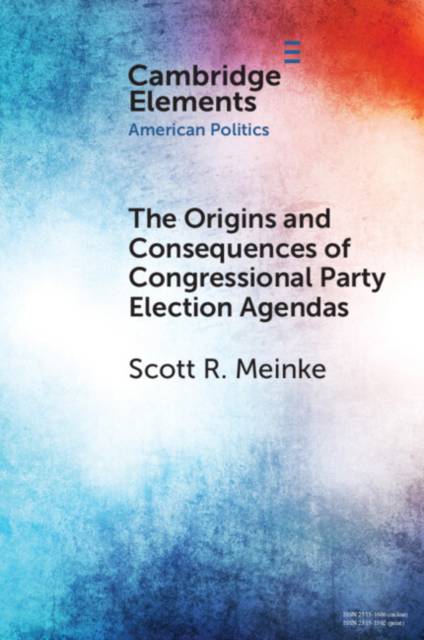
- Afhalen na 1 uur in een winkel met voorraad
- Gratis thuislevering in België vanaf € 30
- Ruim aanbod met 7 miljoen producten
- Afhalen na 1 uur in een winkel met voorraad
- Gratis thuislevering in België vanaf € 30
- Ruim aanbod met 7 miljoen producten
Zoeken
The Origins and Consequences of Congressional Party Election Agendas
Scott R Meinke
€ 31,95
+ 63 punten
Uitvoering
Omschrijving
This Element examines congressional party election agendas, asking first how they originate and what priorities within the party they strategically represent and, second, how they shape post-election legislative activity and policymaking. After surveying post-1980 agenda efforts, it focuses on two prominent cases, the Republican Contract with America (1994) and the Democratic New Direction for America (2006). Using archived records and other qualitative evidence, it shows that both agendas were leadership-driven but were developed in lengthy and relatively inclusive processes. Quantifying agenda content, it demonstrates that the parties strategically skewed agenda promises toward select segments of the caucus, as measured in bill introduction priorities, and the promises echoed leadership messaging from speeches and floor motions in the Congress before the election. After winning a majority, both parties shifted the House's legislative activity sharply toward agenda priorities, but the impact on policy outcomes was substantially constrained.
Specificaties
Betrokkenen
- Auteur(s):
- Uitgeverij:
Inhoud
- Aantal bladzijden:
- 75
- Taal:
- Engels
- Reeks:
Eigenschappen
- Productcode (EAN):
- 9781009264884
- Verschijningsdatum:
- 23/02/2023
- Uitvoering:
- Paperback
- Formaat:
- Trade paperback (VS)
- Afmetingen:
- 152 mm x 229 mm
- Gewicht:
- 122 g

Alleen bij Standaard Boekhandel
+ 63 punten op je klantenkaart van Standaard Boekhandel
Beoordelingen
We publiceren alleen reviews die voldoen aan de voorwaarden voor reviews. Bekijk onze voorwaarden voor reviews.











